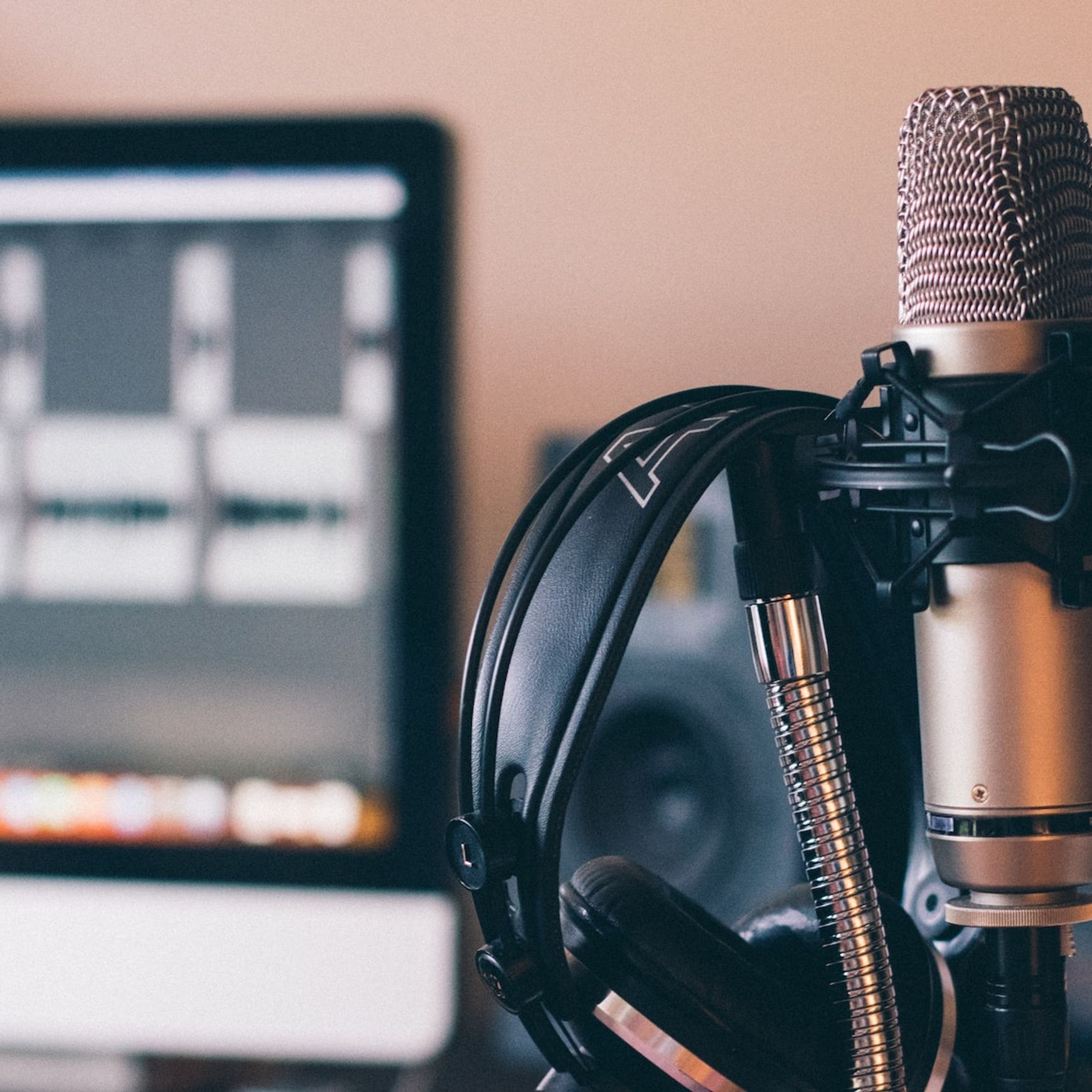How to format an interview transcript

Interview transcription is the conversion of audio or video content of an interview into written text. This procedure is essential for various reasons, such as research, legal purposes, journalism, or record-keeping. Understanding the basics of interview transcription is crucial for a clear, readable, and accurate transcript.
The first step in transcription is to listen to the interview recording. This is important to get familiar with the content, context, and the different speakers involved. Identifying speakers and their particular speech patterns becomes easier, which is crucial when transcribing a discussion.
When you begin transcribing an interview, it is important to keep the text verbatim, meaning you should transcribe precisely what is said in the interview. However, depending on your transcript's purpose, you might omit filler words like 'uh,' 'um,' 'like,' 'you know,' etc. For instance, these words are often left out for readability in a journalistic context. But for a linguistics study, every utterance is essential. Therefore, the style of transcription may vary based on the intended use.

In the interview transcript, each talker should be identified. This could be by using their names or labels such as 'Interviewer' and 'Interviewee,' or 'Speaker 1', 'Speaker 2', and so on, if the names are unknown. This makes it easier for readers to follow the discussion. Also, a new paragraph should be started each time the talker changes to avoid confusion.
Additionally, non-verbal communication, like laughter or pauses, might be included. Again, this depends on the context. For a formal research study, indicating a pause or laughter might provide essential information about the interaction.
Finally, it’s also important to proofread the transcript to ensure there are no mistakes. This step can't be emphasized enough, as it ensures your final transcript is accurate and error-free. It's also a good idea to listen to the interview again while reading the transcript to be sure nothing is missed.
Understanding these basics of interview transcription can help you produce a clear, readable, and useful transcript. The procedure may seem tedious, but it becomes easier and quicker with practice and if you use automated software like HappyScribe.
Essential tools for formatting an interview transcript
When embarking on formatting an interview transcript, a few essential tools can simplify the task to be less daunting. Whether a professional scribe or a beginner, these tools will help you deliver a well-structured and readable transcript.
Transcription software
Firstly, transcription software is a must-have tool. There are many types of transcription software available. Some are free, while others require a subscription. These programs often come equipped with features such as automatic transcription, time-stamping, and talker identification, which can significantly reduce the time and effort needed to transcribe an interview. Notable examples include Descript, Trint, Otter.ai, and HappyScribe. Remember to choose a program that suits your needs and budget.
HappyScribe, a third-party transcription service, is a one-stop shop providing transcription and subtitles using cutting-edge AI and human transcribers. Happy Scribe's automatic transcription software comes with talker demarcation, timestamps, and the option to add a customized lexicon, which promises 80% accuracy. Creators and viewers from all over the world can be served by Happy Scribe's AI translation, which can produce subtitles in 120 languages and accents.
Their 100% human-made transcription service, available 24/7 with rapid response times, transcribes your audio using native speakers.
Quality word processing software
Good word processing software is the second essential tool. Microsoft Word is popular as it offers many formatting options, including different heading and subheading styles, paragraph spacing, bullet points, and more. Google Docs is also a suitable alternative, especially if you need to share the transcript with others or access it from different devices.
Investing in good headphones
Finally, investing in a good set of headphones can greatly improve your transcription. Clear audio is crucial when transcribing an interview. Noise-canceling headphones can help you focus on the audio and correctly transcribe the discussion, even in noisy environments.
Getting a foot pedal
In addition, a foot pedal can be a helpful tool for controlling audio playback without needing to reach for the mouse or keyboard constantly. This is especially useful for longer interviews.
Remember, while these tools can assist in making the transcription more efficient, they are not a substitute for careful listening and accurate typing. Patience, focus, and attention to detail are still key in producing a high-quality transcript.

Step-by-step guide to transcribing an interview
Transcribing an interview can seem daunting, but it doesn't have to be. Following a step-by-step guide to transcribe audio to text can simplify the procedure to be much more manageable. Whether you're a journalist, researcher, or student, transcribing interviews is an essential skill. Here's a step-by-step guide to help you through the procedure.
Step 1: Listen to the interview recording
The first step is to listen to the interview recording. Do this a few times, familiarizing yourself with the speaker's tone, style, and the overall context of the discussion. This will help you prepare for the transcription process and provide a better understanding of the content.
Step 2: Decide between verbatim or non-verbatim
Next, you should decide whether to transcribe verbatim or non-verbatim. Verbatim transcription includes everything from false starts to filler words like "um," "uh," and "you know." This type of transcription is generally used for legal purposes. Non-verbatim transcription, on the other hand, omits these filler words and provides a more readable transcript. This is commonly used for journalistic or research purposes.
Step 3. Get to transcribing
Now, onto the actual transcription process. It's a good idea to use transcription software to help you. This software allows you to slow down, speed up, and rewind the recording as needed. As you listen to the interview, type out what you hear. Keep in mind that accuracy is key. If you need clarification on a word, rewind and listen to ensure you capture the correct information.
Step 4: Proofread your transcript
After you've completed the initial transcription, proofread your work. Check for spelling or grammatical errors to be sure the transcript accurately reflects the recording. It's also a good idea to listen to the recording once more while reading through the transcript to catch any missed information.
Step 5: Format your transcript
Finally, format your transcript. Start and label each new talker on a new line (e.g., Interviewer, Respondent). If you're using timestamps, include them at regular intervals or at the start of each speaker's turn. Be sure to break up long paragraphs for readability and use punctuation to indicate the tone and pace of the discussion.
Remember, practice makes perfect. The more you transcribe, the quicker and more efficient you'll become. With these steps, you’ll be well on your way to producing professional-quality interview transcripts. It’s a skill that will serve you well in many professional contexts.
Tips for editing and proofreading your transcript
Editing and proofreading your interview transcript is as important as accurately transcribing the interview itself. The final step ensures the document is polished, easy to read, and free from errors. Here are a few tips to help you edit and proofread your transcript effectively.
Take little breaks
Firstly, take a break before editing after you finish transcribing the interview. Fresh eyes can do great in catching small errors or inconsistencies. When you're ready to begin, read the transcript out loud. This can help you spot awkward phrasing or mistakes that you might need help with when reading silently.
Prioritize punctuation
Next, pay close attention to punctuation. Ensure that you correctly use commas, periods, and quotation marks. Proper punctuation makes the transcript easier to read and helps convey the speaker's tone and pauses accurately. For the same reason, do not neglect the importance of paragraph breaks. They can significantly improve the readability by breaking up large blocks of text.
Retain the speaker's original diction
It's also vital to maintain the speaker's original language and tone. Avoid the temptation to correct grammar or rephrase sentences for clarity. Your role is to accurately record what was said, not rewrite the speaker's words. However, do remove filler words such as "um," "uh," and "like" unless they are crucial to the context or meaning of the sentence.
Use grammar-checking tools
Another helpful tip is to use a spell-checker or a grammar-checking tool. While these tools should not replace manual proofreading, they can help catch typos or grammatical errors you might need to look into.
Have a beta reader
Lastly, once you have edited and proofread the transcript, consider having someone else review it. A second pair of eyes can often catch mistakes or unclear passages you might have missed. Remember, the goal is to create a transcript that is as accurate and clear as possible.
In conclusion, editing and proofreading your transcript are critical to ensure its quality and accuracy. With careful attention to detail and a thorough review process, you can produce a professional and polished transcript that accurately reflects your interview.

Best practices for preserving the authenticity in interview transcripts
When transcribing an interview, it's of utmost importance to preserve the authenticity of the discussion. The transcript is not just a document; it's a record of a genuine interaction full of nuances, emotions, and subtleties. Therefore, the aim should be to capture the essence of the discussion as accurately as possible. Here are some best practices to maintain the authenticity of interview transcripts.
Verbatim transcription
Firstly, transcribe verbatim. This includes capturing every word, pause, and filler (like 'um,' 'uh,' etc.) that the talker uses. Some might argue that these fillers don't add value, making the transcript read clumsily. However, they give a true representation of how the interviewee speaks, which is crucial in preserving authenticity.
Hold the speaker's diction high
Secondly, respect the speaker's language and style. Include slang, colloquial expressions, or industry jargon in the transcript if the interviewee uses slang. Altering the language to enable it to sound 'better' or 'more professional' will only distort the original message and the speaker's voice.
Add non-verbal communication cues
Thirdly, make sure to include non-verbal communication cues. These could be laughter, pauses, sighs, or emphasis on certain words, all of which contribute to the overall tone and context of the discussion.
Maintain a systemized order
Lastly, maintain the chronological order of the discussion. Do not rearrange the responses to make the transcript read more logically or coherently. The flow of the discussion often reveals the interviewee's thought process, which is a critical aspect of the conversation's authenticity.
Remember, transcribing an interview aims to create a written record that mirrors the original conversation as closely as possible. By following these practices, you're preserving the authenticity of the interview transcript and honoring the interviewee's voice and experience.
HappyScribe provides you with the best format for your interview transcripts
Getting your interview transcript is one thing; formatting it correctly is another. Whether you need a transcript or the perfect formatting, Happy Scribe is the only transcription agency that can provide you with the ideal format that fits all your needs.
As an experienced transcription agency, we understand the discomfort it brings when you have to pay more for transcribing your services. As such, we offer clients the best prices while they enjoy top-notch services. Both our AI and human transcriptions will meet your formate demands.
Additionally, we employ a complex punctuation module to convert spoken words into written texts that correctly use commas, full stops, and question marks. We also have a quick transcribing feature. In just 20 minutes, users can have an hour of audio transcribed.
The program can transcribe videos in addition to audio. The talker identification mechanism automatically starts a new paragraph every time the talker changes. With only one click, the names of the speakers may also be added.
We emphasize the content that had trouble transcribing audio or video to identify and correct errors. The robust subtitle generator provides customers with accurate and thorough subtitles for videos. Within the software, one can change and adjust the subtitles following the time frames.
Future customization of the subtitles will allow for proper viewing of the frames and good contrast. The most notable aspect is that HappyScribe can perform all these tasks in over 119 different languages, making it a comprehensive transcribing software with many features.
Frequently Asked Questions
Is it necessary to transcribe interviews?
Absolutely! Interview transcription ensures accuracy in reporting and makes it easier to find story connections between interviewees. Our brain fills in the gaps when it can't hear what an interviewee said, but those words may not be accurate. And skimming and scanning the written words is much faster than streaming hours of audio, making story connections jump off the page.
How can I improve the accuracy when I transcribe interviews to text?
To get the highest possible accuracy rate when you transcribe interviews to text you need to upload a high-quality audio file. To obtain a high-quality audio file, it is advised that you maintain a consistent recording environment, avoid background noise, use quality microphones, and ensure that speakers talk directly into the microphone and avoid talking over one another.
How accurate are HappyScribe transcription services?
Ongoing technological advances continue to improve the accuracy rate of automatic transcription. Depending on the audio quality, speaker accents, and technical jargon, our automatic transcription software can achieve up to 85% accuracy. And with the help of our professional transcribers, your transcripts can be 99% accurate.
What is an interview transcription?
An interview transcription is a written record of a spoken interview, converting video or audio into text.
Transcriptions can vary: verbatim transcription (captures every word and it is usually done with automatic transcription), edited transcription (without fillers, small talk...) and summary transcription (no word-for-word accuracy needed). Software like HappyScribe allows companies, journalists, researchers and HR specialists to find the type of transcription that better suits their needs.
Can AI transcribe an interview?
Yes, AI can produce interview transcriptions. Different softwares transcribe audio and video to text, using automatic speech recognition (ASR) to convert spoken words into written text. The main aspects to keep in mind when choosing an AI transcription software are: accuracy, speed, languages, integrations with other tools and cost.
How to automatically transcribe an interview?
Transcribing an interview using automatic AI-powered tools is easy. You just need to upload your interview file to an AI-based software for interview transcription, like HappyScribe. HappyScribe and other transcription tools support common audio and video formats like mp3, wav, mp4, m4a and many others. Then, you just need to click on automatic transcription and wait for a few minutes to get your interview transcription. The process may need more time for longer files.

André Bastié
Hello! I'm André Bastié, the passionate CEO of HappyScribe, a leading transcription service provider that has revolutionized the way people access and interact with audio and video content. My commitment to developing innovative technology and user-friendly solutions has made HappyScribe a trusted partner for transcription and subtitling needs.
With extensive experience in the field, I've dedicated myself to creating a platform that is accurate, efficient, and accessible for a wide range of users. By incorporating artificial intelligence and natural language processing, I've developed a platform that delivers exceptional transcription accuracy while remaining cost-effective and time-efficient.


